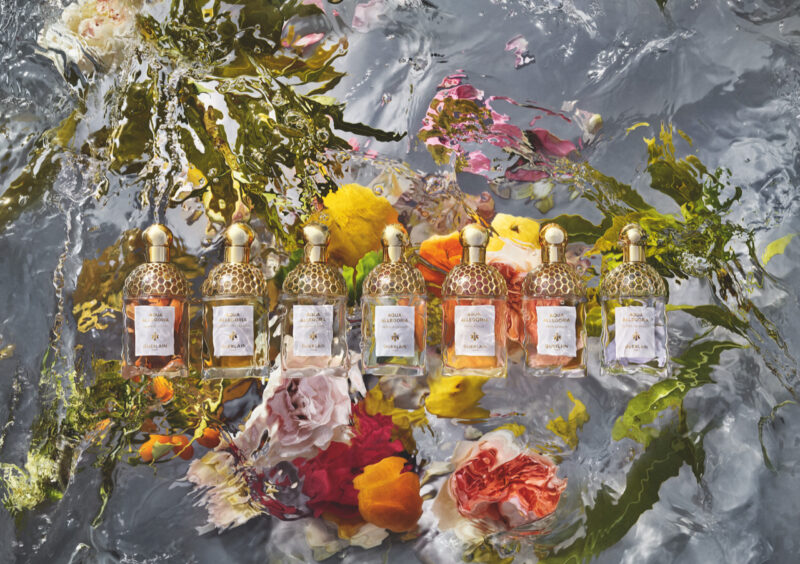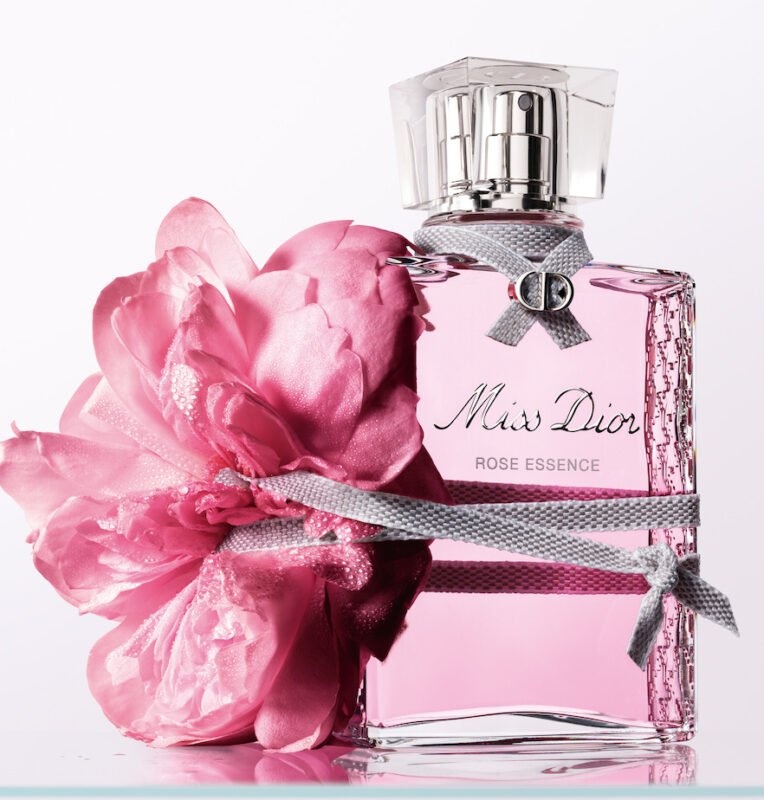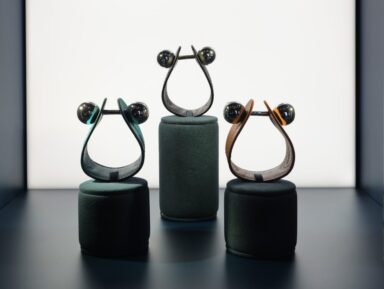Roses: a strategic flower for so many perfumery masterpieces
Words by Sandra Bardin
At the first light of dawn, in the endless rose garden, pickers with gentle fingers proceed between the rows, filling their aprons with newly bloomed flowers and then pouring them into jute sacks, delicately, to keep them fresh until they reach the workshops where they will become essences. No, we are not in the painting The Gleaners by Jean Francois Millet or other masters of 19th-century Realism, but today on the Côte d’Azur, in Grasse, the cradle of world perfumery. And precisely in the 20 hectares of floral cultivations reserved for the Maison Chanel: it is in these fields, tended with ancient wisdom in respect of nature, that the flowers of Chanel No. 5 are born. In particular, the May Rose, with its sweet, honeyed, and slightly spicy scent, has the power to orchestrate the 80 fragrant notes into a perfect chorus, with no dominant voices. Just as Mademoiselle Chanel wished when, in 1921, in contrast to the monofloral fragrances fashionable at the time, she expressly ordered a special olfactory creation from the ‘nose’ Ernest Beaux: she wanted nothing romantic, no immediately identifiable flowers, but a constructed, structured, daring composition. It is the first fragrance signed by a dressmaker, it must be unique. Unprecedented. Why not, abstract? And so it was: thanks also to aldehydes, a synthetic component that sublimates the charm of natural notes, after a hundred years Chanel N.5 remains today more than ever a revolutionary fragrance, a pioneer of modern perfumery.

It comes from the Valley of Roses in Bulgaria, the olfactory theme that entitles Red Rose, the most “butch” of the Aqua Allegoria collection, 12 Eau de toilettes with evocative names of plants, fruits, and flowers that are in themselves harbingers of well-being and freshness. “This fragrance is the dance of a rose,” explains Thierry Wasser, Guerlain’s maître parfumeur: “with its fruity notes of raspberry and lychee, the red rose is the star of a creation that I would describe as smiling with a touch of sour.
Behind these winged words lies not only a profound knowledge of the communicative power of fragrances – in the case of Red Rose, joyful and tantalizing good vibes – but Guerlain’s eternal homage to the beauty of nature everywhere: a nature which, if protected and respected, is a treasure trove of infinite treasures. Hence the line’s claim, The world is our garden, which well illustrates the brand’s commitment to safeguarding the planet through the almost total use of natural ingredients. Rosa Rossa Aqua Allegoria is also an excellent pretext for visiting Guerlain’s first Italian boutique, inaugurated this May at Via Montenapoleone 1 in Milan: in the elegant setting, the public can enjoy an experiential journey among the Maison’s most prestigious creations, including personalized beauty consultations on fragrances, make-up, skincare and every other product of the brand.

The centifolia rose is the secret of the perfumed water that is said to flow in May from the fountains of Grasse, channeled with rainwater from the rose gardens. The legendary rose, a favorite of Christian Dior who chose it for his first creation, Miss Dior, in 1947, has remained the star of the bouquet even in subsequent reformulations and concentrations of the fragrance. Its splendor lives on in the exclusive cultivations of the Domaine de Manon reserved for the Maison, a veritable cru of a fine production. In particular, thanks to the special technique of hydrodistillation to extract the rose water that makes the new Miss Dior Essence is a “vintage fragrance”, i.e. alive, sensitive to the typical scents of each harvest including the slightest natural variables. With the quintessence of centifolia rose pervading a base with notes of vetiver, patchouli and a base of guaiacum, the composition of Miss Dior Essence boasts a lower alcohol level than standard perfumes while remaining intense and persistent; even the packaging speaks of nature right from the wrapping paper, obtained from the remains of the harvested flowers.




